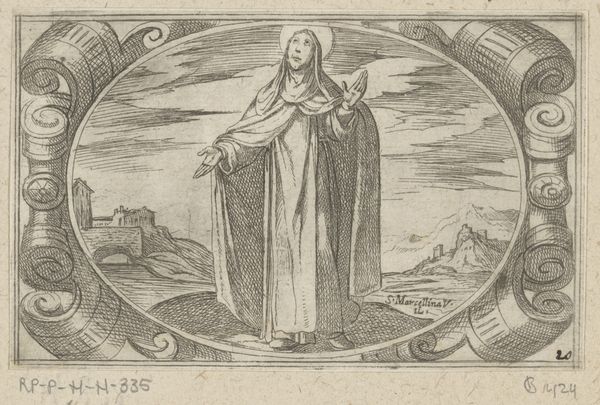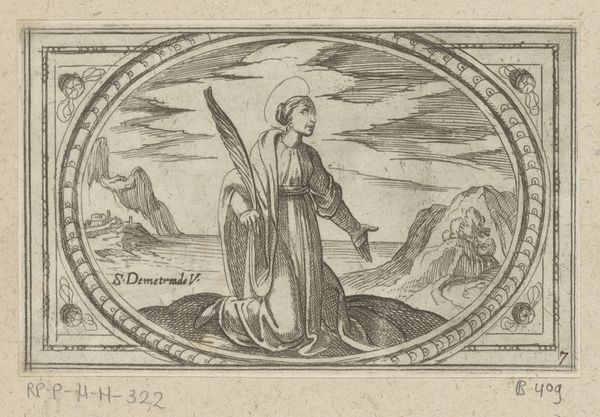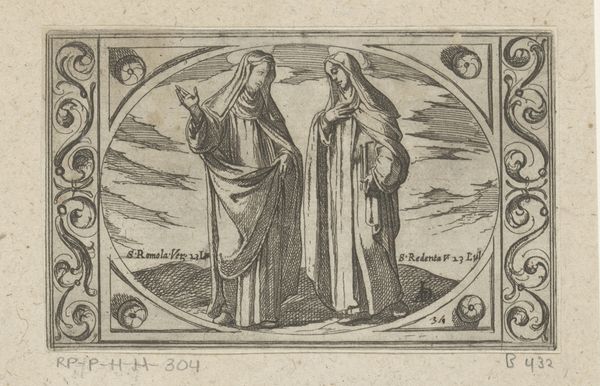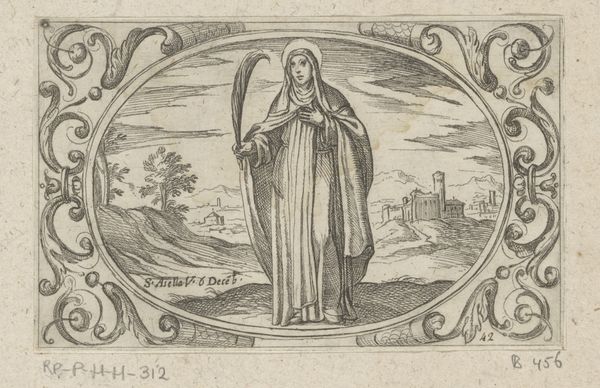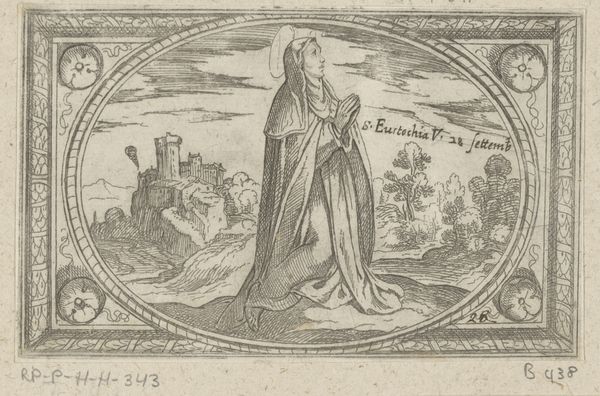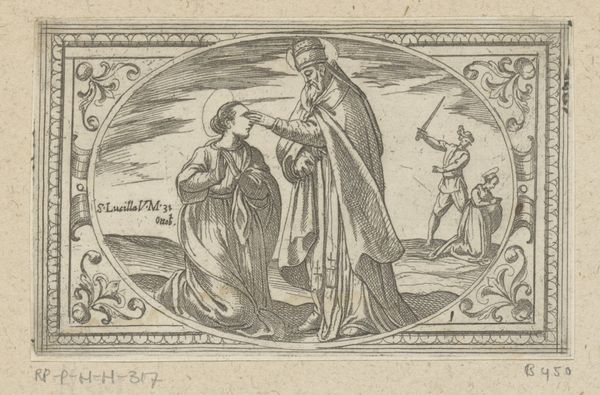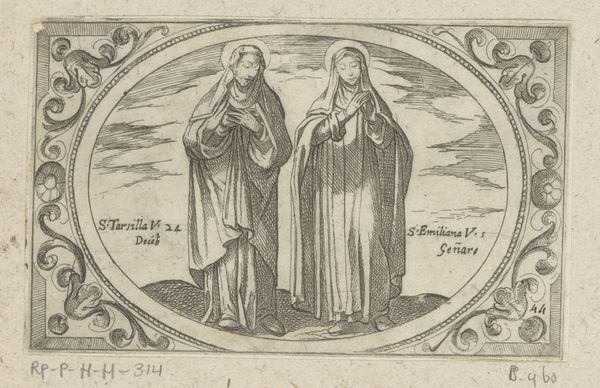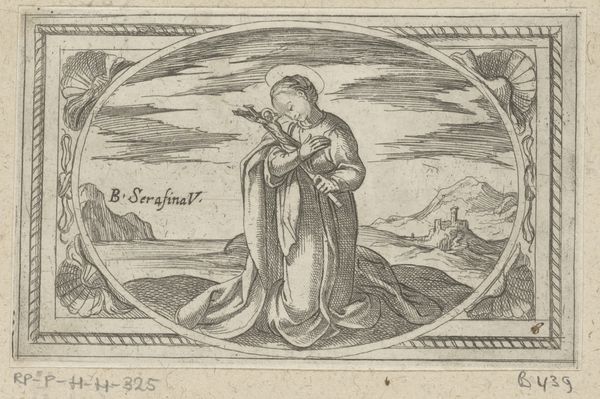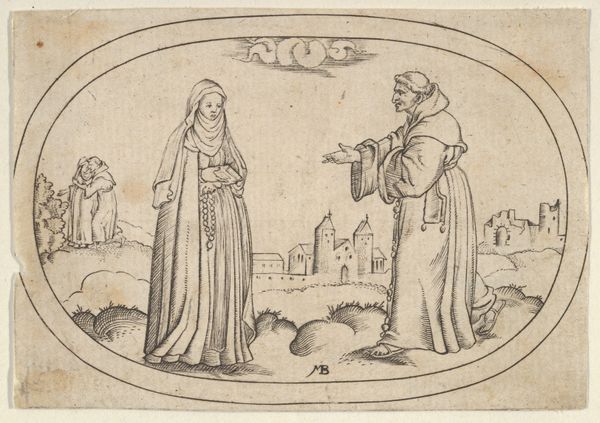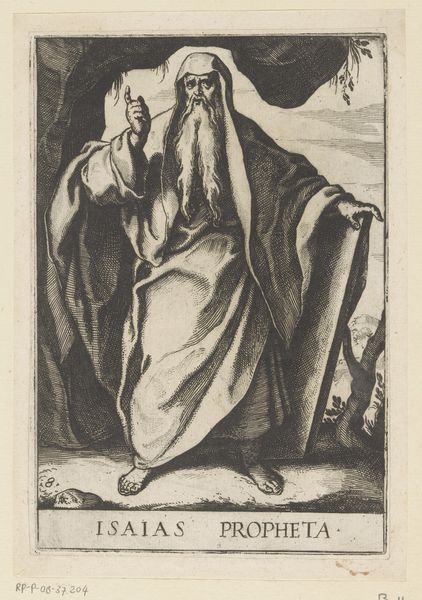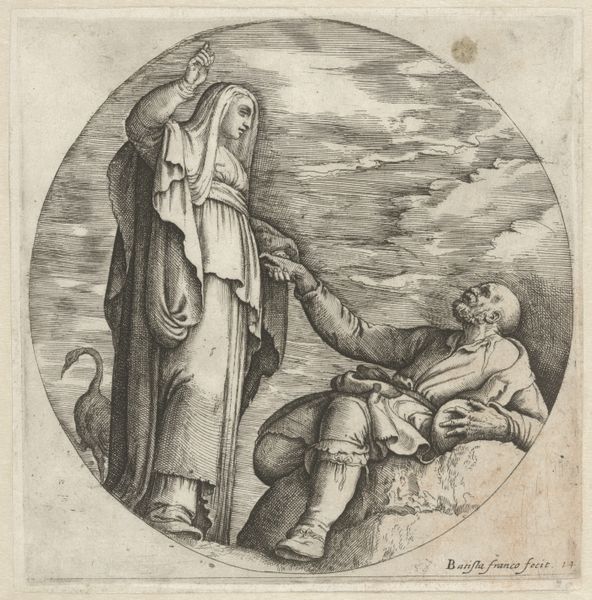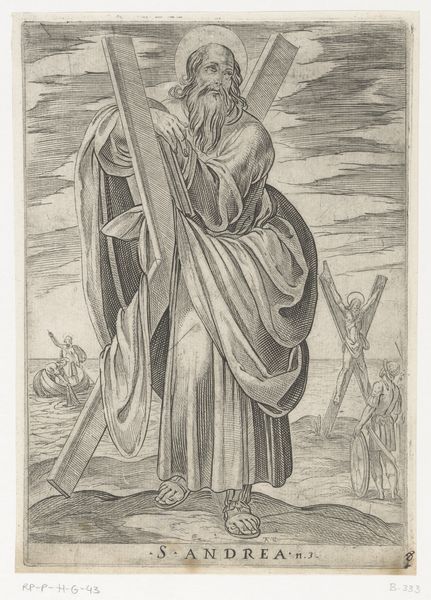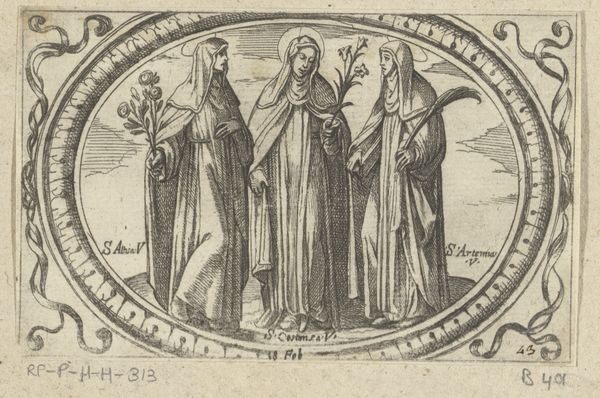
print, engraving
# print
#
figuration
#
history-painting
#
italian-renaissance
#
engraving
Dimensions: height 73 mm, width 114 mm
Copyright: Rijks Museum: Open Domain
Editor: This engraving, "H. Benedetta" by Antonio Tempesta, dates from the late 16th or early 17th century. There’s something really serene about the woman in the center, but the landscape around her seems stark and almost isolating. How do you interpret this work, especially in relation to the historical context? Curator: This piece strikes me as a powerful commentary on the roles afforded to women, specifically within religious structures of the time. Notice how Benedetta is enclosed within this oval frame and a vast, almost barren landscape? This isolation speaks to a larger narrative, right? Women were often confined to domestic or religious spaces, their agency limited. Editor: So, her act of reading—what appears to be prayer or study—becomes a kind of quiet rebellion? Curator: Precisely. Education and literacy, especially for women, were often seen as subversive acts, offering an avenue for independent thought and challenging the existing social order. Consider how the Italian Renaissance was itself a time of intense political and religious upheaval. The very act of representing a woman engaging intellectually becomes significant. Editor: It's interesting how this small print can speak to such complex power dynamics. Were images like this circulated widely? Curator: Yes, prints were a powerful tool for disseminating ideas. So we have to ask, who was this image intended for? What kind of discussions was Tempesta hoping to inspire? And how can it challenge assumptions of who benefits most from religious spaces? Editor: I see. This work invites me to reflect on the continuing struggle for agency, both then and now, reminding us of the constraints some women still face. Thank you. Curator: Absolutely. It’s by interrogating those historical constraints and linking them to our current socio-political realities that art becomes truly transformative.
Comments
No comments
Be the first to comment and join the conversation on the ultimate creative platform.
